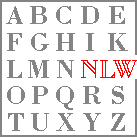



 | |
| The orthography of machine-readable Neolatin texts: A plaidoyer for minimal intervention | |
   |
Neolatin orthography is neither arbitrary nor uniform
The impression of arbitrariness can be misleading. Uniformity of spelling was not a goal of early modern authors, but they may try to be consistent in points they consider important. Moreover, orthography may offer clues to the linguistic environment in which the author worked. We loose such messages by standardization.
'Etymological' orthography: Examples
The Italian humanist Niccolò Perotti usually spells Pliny as Plynius, not Plinius, because he connected it with the Greek plyno.
Humanists since Tortelli's De orthographia were prone to believe that ceterum came from Greek kai heteros and therefore considered caeterum the more correct spelling; if anything we would have to standardize in the opposite direction from the modern norm.
aequiperare in Neolatin texts is usually spelt aequiparare, probably from a dim impression of kinship with comparare. If we change this we remove a feature which may be important for the understanding of the text.